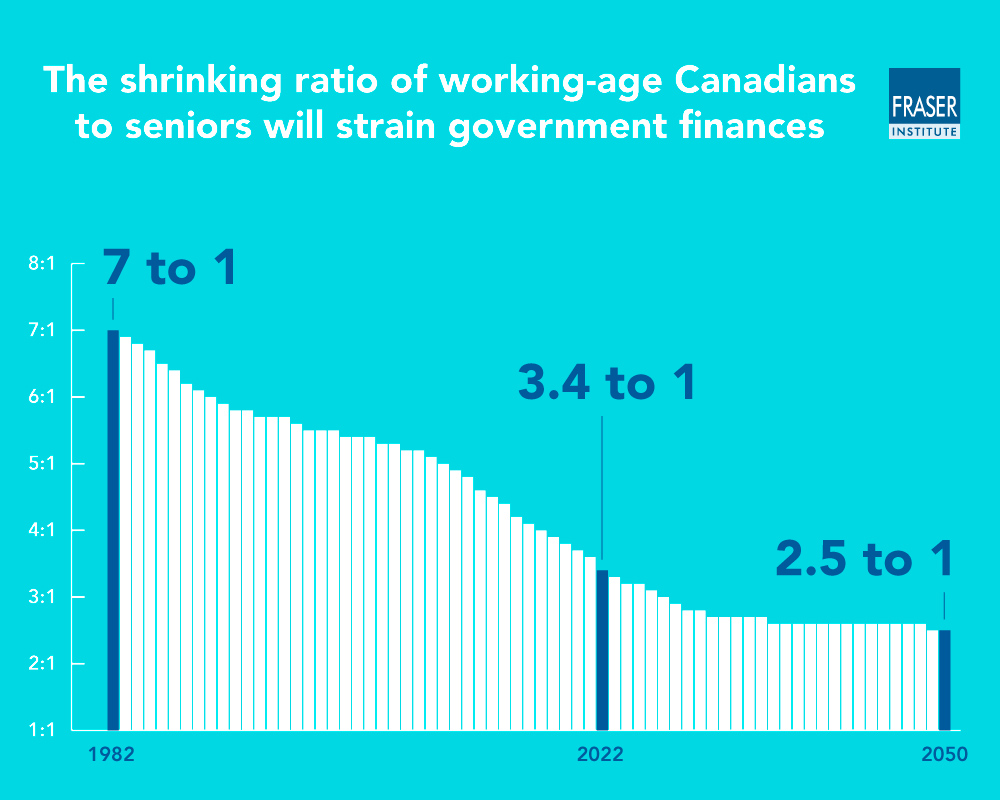Policymakers will face increased costs unless more people can be brought into the workforce

Living well past retirement age is now the future for most Canadians, with an average life expectancy of 82 years.
But while this is great news for individuals and their loved ones, the aging population is a significant challenge for policymakers who face higher costs to support older people, with a smaller share of workers paying tax.
Do they go all out to attract more immigrants to bolster the Canadian workforce? Cut support for seniors? Or hike taxes so that more revenue comes from fewer people?
According to a new study from the Fraser Institute, the number of working-aged Canadians relative to the number of seniors has declined from 5.4 in 2000 to 3.4 in 2022. It is forecast to be just 2.4 by 2050.
The share of Canada’s population that is 65 or older increased from 14% in 2010 to 19% in 2022 and Statistics Canada expects it to rise to 25% by 2059.
“Workers pay the bulk of taxes, which governments need to fund important services, including health care and income transfers to seniors. As the relative number of seniors grows, and the relative number of workers declines, government finances across Canada will be put under increasing strain,” said Ben Eisen, senior fellow at the Fraser Institute and co-author of Understanding the Changing Ratio of Working-Age Canadians to Seniors and Its Consequences.
Rising costs
The report highlights the stark difference in health costs for older people in Canada (average $7,751 per year) compared to those of peak working ages 35-44 ($2,811).
This far higher cost, plus a larger population of older Canadians, adds up to potentially soaring borrowing by the government. Old Age Security and Guaranteed Income Supplement will also be claimed by a far larger share of people.
“This shrinking ratio of workers to seniors in Canada—which is already underway—is a significant headwind to policymakers in their efforts to improve the sustainability of government finances in Canada,” Eisen said.

Image credit: Fraser Institute



